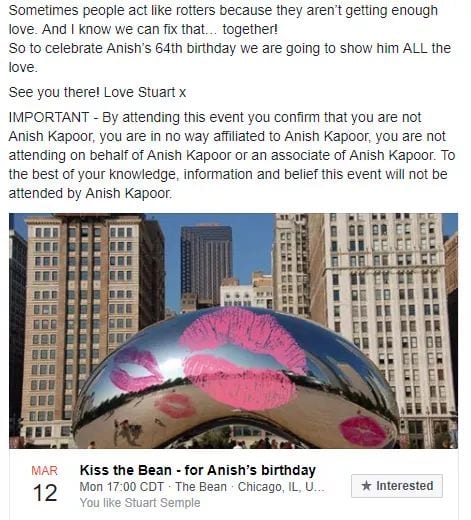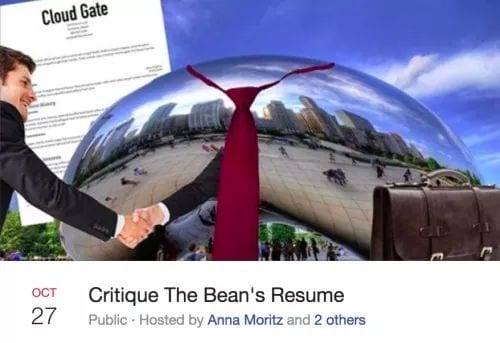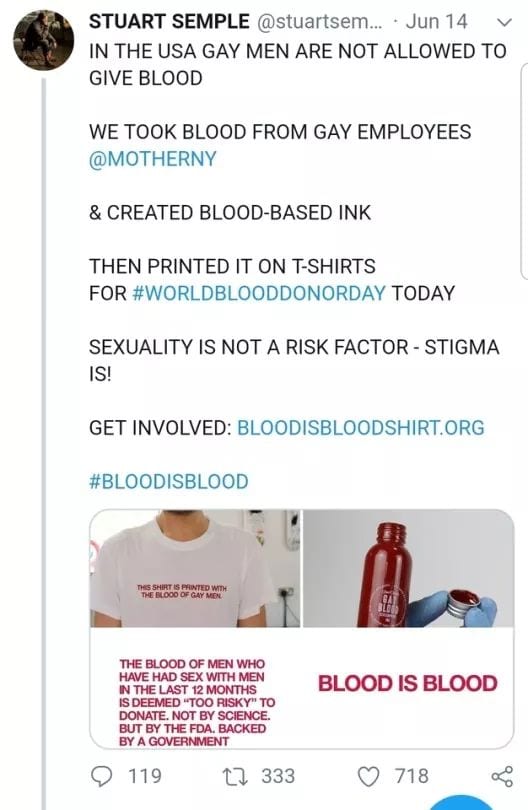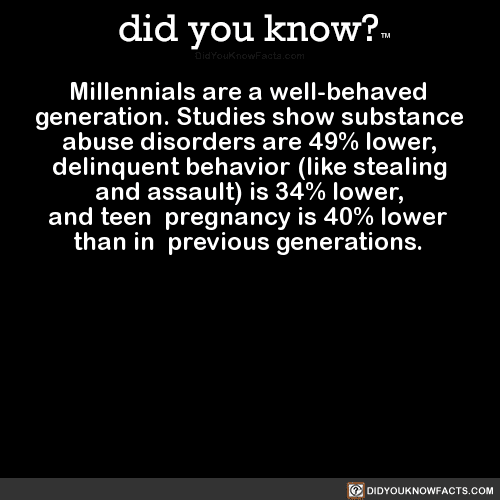These days, a lot of people live in complete echo chambers and they never hear any dissenting opinions or information AT ALL.
And sometimes those echo chambers are filled with misinformation, lies, fake news, and absolute BULLSHIT.
But that’s how propaganda works.
And that’s just the world we live in right now.
Let’s hear from some AskReddit users who talk about how they used to buy into certain propaganda only to later learn that it was total BS.
1. YOU’RE the idiot.
“When I was a teenager I thought that everyone over 30 is old and doesn’t understand me.
I was a fucking idiot.
It’s something in the brain chemistry but to the teenager, life experience is irrelevant because that life took place before I was born and therefore is now out of date and not in the slightest but applicable to me.”
2. Pretty rare, actually.
“That most people achieve success in their lives during their 20’s. This is bullshit in the grander scheme of things. Lots of super talented people end up becoming successful in their late 30’s, 40’s, and even 50’s.
The same goes for the concept of “If you want to get good at something, you have to start super young..” Which does SOMETIMES work. But a lot of people can actually get good at a skill in older ages.
You can learn the Piano in your 30’s, and get really good at it. But you’re not going to be doing concerts or anything. But it doesn’t mean that you’re not good/great/exceptional at it.”
3. Not true!
“That carrots give you exceptional night vision.
I later found out that that particular belief became widely accepted due to a British propaganda campaign from world war II designed to hide the invention of radar from the Germans. They claimed that the reason their air force pilots were so effective at night was due to them being fed carrots to increase their night vision. It was so effective that people still tout that particular benefit of carrots years after the war ended.
Edit, a couple corrections: While carrots are rich in vitamin a which helps prevent your eyesight from deteriorating, they still do not give superhuman vision like the propaganda claimed. The myth isn’t that they are good for your eyesight. It is an exaggeration of how effective they actually are.
Also I was incorrect when I said that the British were trying to cover up the invention of radar. They were in actuality trying to cover up an an advancement in radar technology that they didn’t want the Germans finding out about.”
4. Cult life.
“I was born into the cult of jehovahs witnesses. I left at 25 when I found out the leaders were covering up child abuse and then instead of changing their rules to protect victims they enforced their archaic rules and then told elders to burn and delete any evidence relating to past cases.
Sick bastards, but Ofc I get shunned and disowned and called a worker of Satan, an agent of the devil, a spiritual warrior committing acts of warfare against god sent to dissuade gods chosen people from the one true god….(who’s chosen peoples leaders cover up child abuse. ) when all I did was try to show my friends and family the multitude of court cases against them
Least I got a badass title.”
5. Accept it.
“Trivial but I bought into the lie that the more you cut hair, the more it grows. I’ve been shaving my beard for years hoping to get a nice thick bush to no avail.
I just have to accept that nature played me and deal with my patchy face hair.”
6. Imagine that! Reading!
“Anti-vax. At one point I was completely sold on the whole “how can you inject infants with dangerous chemicals” thing.
Then I read up on the actual science and realised how uninformed I was.”
7. GMOs.
“GMOs are dangerous for your health.
Not only is the idea that they’re bad bullshit, the global food supply would be more expensive, less plentiful, and poor parts of the world would experience more frequent, prolonged shortages of crucial items if it weren’t for GMOs.”
8. Not for everyone.
“That the only way to achieve success in life is to study hard, get top grades, and go to university and study something like law or medicine.
Plenty of people I know have achieved success and happiness without top university education. I also believed the idea that the career you study for is for life.”
9. Conspiracy theory.
“I totally bought into that ridiculous Denver airport conspiracy for a few months after a friend showed me it in high school.”
10. Going on a mission.
“Mission trips are for helping others…. really it’s just a huge ego boost for many people who want to exploit people’s needs to feel better about themselves.
Plus the whole part where it might actually be more harmful than helpful…”
11. Chiropractors.
“I had always thought chiropractors were bullshit, but what confirmed it for me was when one day after hurting my back a friend recommended I try it and I thought “meh I guess it’s worth checking out at least.”
So I called but forgot it was a Sunday and they were closed, but I left my name and number saying I was interested in making an appointment. While I was at work the next day and couldn’t answer, the chiropractor left me about 7 or 8 voicemails, each one sounding like one of those gym sales people trying to get you to join.
After that I was like yeah no legit healthcare place would be trying to sell me this hard on making an appointment offering this discount or the other just to get me in the door.”
12. Just say no!
“The anti drug campaigns we all had to listen to as a kid.
The cop that came to my school to give our anti drug talks ended up drinking himself to death at 51.
Guess no one told him alcohol was more dangerous than what he was telling us not to take.”
13. Total fiasco.
“Iraq had WMDs.
I believed it well before Bush came into office. I would read in the paper how even during the Clinton era that Saddam would block actively block weapon inspectors. To me, that sounded like he was hiding something. I still believed it months after the invasion.
Then the truth started coming out, ‘Curveball’ was some taxi driver that made shit up, Cheney outed a CIA agent because she found out that Iraq wasn’t going for nuclear material and it went against their narrative. It would be one thing if they have bad intel, but this was intentionally falsified intel to justify their war.”
14. Too bad a lot of people still believe this shit.
“I used to be big into conspiracy. Alex Jones was right, Clinton’s are actually alien lizard people, and all sorts of crazy stuff.
I even believed Obama was a secret agent Muslim going to install martial law and kill all non muslims. It got to the point I was even considering grabbing guns, I even thought about if I attacked a mosque that I could help stop the Muslim takeover.
It took so long to get my mind straight. It’s a slippery slope, and it’s not something I want anyone to go down on.”
15. Not getting laid.
“I bought into the abstinence-until-marriage crap in middle school, when they made you sign all the fancy pamphlets about why it’s the right thing to do. Really felt it would stop my fellow classmates from having sex until marriage.
My belief in that fell apart in high school. A teammate on my football team would tell stories in the pregame time for JV games about how he had banged some girl the other week. I can still remember 3 specific stories, one of which was how he had sex while wearing a ziplock baggie instead of a condom.”
16. Politics as usual.
“Everyone on my political spectrum are all good and everyone on the other side are terrible people who have absolutely nothing to offer in a discussion and no valid opinions”
In middle school, they made us take political party quizzes to see what we would vote. It became this whole us vs them atmosphere. This only became worse when my parents would be talking about the other side like they were all idiots.
I firmly believed growing up that anyone opposite to me on the political spectrum are evil, dumb people and any points that may align with them are bad. I believed you had to be all or nothing. I was very closed minded.”
Very interesting perspectives in there, that’s for sure.
How about you?
Did you previously believe wholeheartedly in things that you later realized were not true or even total BS?
If so, please share your stories with us in the comments.
We look forward to hearing from you!
The post People Admit Propaganda They Used to Buy Into, but Later Realized Was BS appeared first on UberFacts.

 #workselfie
#workselfie  lol #LifeofaLetterCarrier
lol #LifeofaLetterCarrier
 #usps #uspspackagepickup #poshpackages #prettibonevalet #linkinbio #poshmark #poshmarkseller #poshmarkcloset #poshlove #poshlife #poshboss #poshvibes #poshmom #momboss #momhustle #girlmom #resellerlife #resellercommunity #sustainablefashion #sustainableliving #secondhandfashion #thriftedfashion #thriftlife #shopsmall #littleredwagon
#usps #uspspackagepickup #poshpackages #prettibonevalet #linkinbio #poshmark #poshmarkseller #poshmarkcloset #poshlove #poshlife #poshboss #poshvibes #poshmom #momboss #momhustle #girlmom #resellerlife #resellercommunity #sustainablefashion #sustainableliving #secondhandfashion #thriftedfashion #thriftlife #shopsmall #littleredwagon Andrea
Andrea



 #benjaminbanneker #benjaminbannaka #masterbuilders
#benjaminbanneker #benjaminbannaka #masterbuilders
 #blackhealthmatters #blackeconomics #blackvegan #publicenemy #chuckd #nas #massappeal #drinkchamps #realrap #newyorkrap #eastcoasthiphop #westcoasthiphop #gangstarap #politicalrap #concioushiphop #elijahmuhammad #malcomx #louisfarrakhan #rakim #prince
#blackhealthmatters #blackeconomics #blackvegan #publicenemy #chuckd #nas #massappeal #drinkchamps #realrap #newyorkrap #eastcoasthiphop #westcoasthiphop #gangstarap #politicalrap #concioushiphop #elijahmuhammad #malcomx #louisfarrakhan #rakim #prince
 #moorinfo #ADOS
#moorinfo #ADOS
















 – – #titanic #titanicship #titanicart #art #titanic1912 #ship #oldship
– – #titanic #titanicship #titanicart #art #titanic1912 #ship #oldship | Second officer Lightoller and first officer Murdoch (right) prepare to close the gangway before Titanic’s departure from Queenstown, Ireland, April 11th, 1912. ⠀⠀⠀⠀⠀⠀⠀⠀⠀⠀⠀⠀ This is the last photograph of Murdoch or any Titanic officer ever seen ⠀⠀⠀⠀⠀⠀⠀⠀⠀⠀⠀⠀ #rmstitanic #titanic #titanic1912 #rmstitanic1912 #photo #history #naval #ship #1912 #historia #whitestarline #barco #olympicclass #beautiful #nice #oceanliner #southampton #england #belfast #olympic #sinking #titanicdisaster #wreck #titanicsinking⠀ ⠀⠀⠀⠀⠀⠀⠀⠀⠀⠀⠀⠀⠀⠀⠀⠀⠀⠀
| Second officer Lightoller and first officer Murdoch (right) prepare to close the gangway before Titanic’s departure from Queenstown, Ireland, April 11th, 1912. ⠀⠀⠀⠀⠀⠀⠀⠀⠀⠀⠀⠀ This is the last photograph of Murdoch or any Titanic officer ever seen ⠀⠀⠀⠀⠀⠀⠀⠀⠀⠀⠀⠀ #rmstitanic #titanic #titanic1912 #rmstitanic1912 #photo #history #naval #ship #1912 #historia #whitestarline #barco #olympicclass #beautiful #nice #oceanliner #southampton #england #belfast #olympic #sinking #titanicdisaster #wreck #titanicsinking⠀ ⠀⠀⠀⠀⠀⠀⠀⠀⠀⠀⠀⠀⠀⠀⠀⠀⠀⠀  | El segundo oficial Lightoller y el primer oficial Murdoch se preparan para cerrar la puerta antes de la partida del Titanic en Queenstown, Irlanda, 11 de abril de 1912. ⠀⠀⠀⠀⠀⠀⠀⠀⠀⠀ Esta es la última fotografía de Murdoch o de cualquier otro oficial del Titanic.
| El segundo oficial Lightoller y el primer oficial Murdoch se preparan para cerrar la puerta antes de la partida del Titanic en Queenstown, Irlanda, 11 de abril de 1912. ⠀⠀⠀⠀⠀⠀⠀⠀⠀⠀ Esta es la última fotografía de Murdoch o de cualquier otro oficial del Titanic. #Titanic #RMSTitanic #Titanic1912 #RMSTitanic1912 #TitanicSinking #SinkingOfTheTitanic #TitanicWreck #WreckOfTheTitanic #TheTitanic #LeTitanic
#Titanic #RMSTitanic #Titanic1912 #RMSTitanic1912 #TitanicSinking #SinkingOfTheTitanic #TitanicWreck #WreckOfTheTitanic #TheTitanic #LeTitanic  Pics from the 1997 movie
Pics from the 1997 movie 
 , hospital
, hospital  , Turkish bath spa
, Turkish bath spa  , squash court
, squash court  , barber shop
, barber shop  , and even a post office
, and even a post office 

 #tellyourstory #stjohnsharbour #sunset #stjohns #packice #explorenl #newfoundland #localart #emptywalls #pieceofhome Order Here
#tellyourstory #stjohnsharbour #sunset #stjohns #packice #explorenl #newfoundland #localart #emptywalls #pieceofhome Order Here  http://ow.ly/yuyy50z3HMz
http://ow.ly/yuyy50z3HMz #
#









